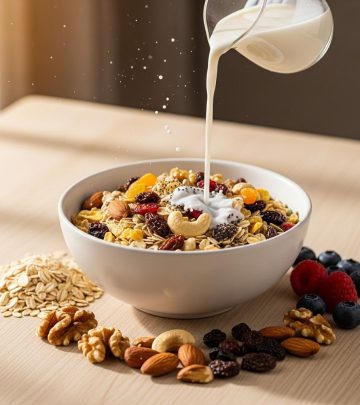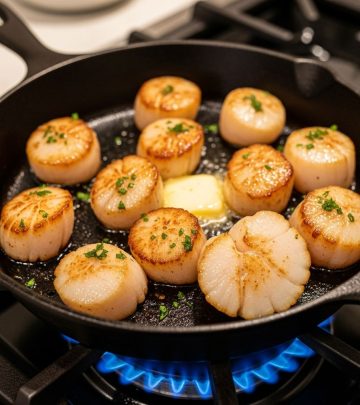Spring Vegetable Fettuccine Alfredo: A Fresh Seasonal Classic
Celebrate the vibrant flavors of spring with a creamy, vegetable-packed fettuccine Alfredo perfect for weeknights or entertaining.

Spring Vegetable Fettuccine Alfredo
As winter fades and nature comes alive, our kitchens beckon us to use the freshest seasonal ingredients in our favorite dishes. A Spring Vegetable Fettuccine Alfredo marries the creamy richness of classic Alfredo sauce with the crisp, lively flavors of spring produce. This dish is a celebration of renewal and abundance, marrying tradition with the bright spirit of the season for a meal that is at once comforting and invigorating.
Why Choose Spring Vegetable Fettuccine Alfredo?
- Seasonal Appeal: Highlights peak spring produce, making the dish taste fresher and more vibrant.
- Balanced Richness: Creamy Alfredo sauce is lightened with vegetables for a less heavy, more nutritious meal.
- Quick & Versatile: Great for easy weeknight dinners or impressive enough for spring gatherings.
Ingredients
This recipe calls for a mix of fresh vegetables and classic pantry staples. While the vegetable selection can vary based on availability and personal preference, the following represents a typical list for a spring-inspired Alfredo:
| Ingredient | Quantity | Notes |
|---|---|---|
| Kosher salt | As needed | For pasta water and seasoning |
| Fresh fettuccine | 9 ounces | Packaged or homemade |
| Extra-virgin olive oil | As needed | For tossing pasta |
| Shiitake mushrooms | 4 ounces | Stems removed, caps sliced |
| Asparagus | 1 bunch | Trimmed and sliced into 1-inch pieces |
| Frozen peas | 1 cup | Thawed |
| Heavy cream | 1 cup | For the Alfredo sauce |
| Unsalted butter | 2 tablespoons | For the sauce |
| Parmesan cheese | 1 cup, grated | Plus extra for serving |
| Chives or other tender herbs | Optional | For garnish |
| Freshly ground black pepper | To taste | For finishing |
Step-by-Step Preparation
1. Prepare the Vegetables
Begin by washing and trimming your asparagus, slicing the stalks into bite-sized pieces. Remove the stems from the shiitake mushrooms and slice the caps thinly. Thaw your peas if using frozen. These vegetables will add layers of texture and flavor to your Alfredo.
2. Cook the Pasta
- Bring a large pot of salted water to a boil.
- Add the fettuccine and cook according to package instructions (usually 2 to 3 minutes if using fresh pasta), until al dente.
- Reserve 1 cup of the pasta cooking water before draining the pasta well.
- Toss the cooked fettuccine with a drizzle of olive oil to prevent sticking and set aside.
3. Sauté the Spring Vegetables
- Heat a large skillet over medium heat with a splash of olive oil.
- Add the shiitake mushrooms, cooking until slightly golden and tender, about 4–5 minutes.
- Add the asparagus pieces and continue to sauté for 2–3 more minutes, until just bright green and crisp-tender.
- Stir in the peas and cook for 1–2 minutes, only until warmed through.
- Remove the vegetables from the skillet and keep warm.
4. Make the Alfredo Sauce
- In the same skillet, reduce the heat to low and add the butter. Let it melt gently.
- Pour in the heavy cream, stirring to combine with the butter.
- Simmer the mixture for about 2 minutes until slightly thickened but still pourable.
- Add the grated Parmesan cheese gradually, whisking constantly until smooth. Add a little reserved pasta water as needed to achieve a silky sauce.
5. Combine and Serve
- Add the fettuccine to the skillet with the Alfredo sauce, tossing gently to coat evenly.
- Return the sautéed vegetables to the skillet and combine with the pasta.
- Season generously with freshly ground black pepper and adjust salt as needed.
- If desired, thin the sauce with a bit more pasta water until it glides smoothly over the noodles.
- Serve in warm bowls, garnished with extra Parmesan and finely chopped chives or herbs.
Tips for the Best Spring Vegetable Fettuccine Alfredo
- Use Fresh Pasta: Fresh fettuccine cooks more quickly and has a wonderful chewy texture, but you can use dried pasta if needed.
- Don’t Overcook the Veggies: Aim for crisp-tender vegetables to maintain their flavor and nutrients.
- Add Greens: Toss in a handful of baby spinach, arugula, or snap peas for more color and variety.
- Change Up the Cheese: Try a mix of Parmesan and Pecorino Romano for a tangier finish.
- Make It Lighter: Substitute half-and-half or whole milk for heavy cream for a lighter sauce.
Nutrition Overview
This creamy pasta is made healthier by the addition of vegetables, making it a more balanced meal than classic Alfredo. A typical serving contains:
- Carbohydrates from the fettuccine for energy.
- Dietary fiber from spring vegetables, supporting digestion and satiety.
- Protein from cheese and, optionally, legumes like peas.
- Calcium and vitamins from the dairy and green vegetables.
For a lighter option, consider substituting lower-fat dairy products or adding more greens to the mix.
Serving Suggestions
- With a Simple Salad: Serve alongside a crisp green salad dressed in lemon vinaigrette.
- Top with Grilled Chicken or Shrimp: For added protein and flavor.
- Pair with Bread: Offer with crusty Italian bread or garlic knots to soak up extra Alfredo sauce.
- As a Side Dish: Serve a smaller portion next to roasted lamb or seared fish for a celebratory meal.
Ingredient Variations for Every Spring
The beauty of this dish is its flexibility. Based on what’s freshest at the market, consider swapping in or adding:
- Snow peas or sugar snap peas
- Fava beans
- Baby spinach or arugula
- Leeks or green onions
- Baby carrots, sliced thin
- Small broccoli or broccolini florets
Choose bright, tender vegetables that cook quickly and won’t overpower the sauce or pasta.
Mastering Homemade Alfredo Sauce
At its heart, Alfredo sauce is a simple blend of butter, cream, and Parmigiano cheese. The key to a smooth sauce is to add the cheese gradually while whisking and to use gentle heat so the sauce does not separate or become grainy. Reserve some pasta water to help emulsify the sauce and coat the noodles perfectly.
Frequently Asked Questions (FAQs)
Q: Can I make this dish ahead of time?
A: While best served fresh, you can prep the vegetables and cook the pasta a few hours early. Store separately and combine with the sauce just before serving for optimal texture.
Q: What proteins go well with spring vegetable fettuccine Alfredo?
A: Grilled chicken, shrimp, or salmon are classic choices. For a vegetarian boost, try white beans or sautéed tofu.
Q: How do I store leftovers?
A: Store in an airtight container in the refrigerator for up to 2 days. Reheat gently over low heat with a splash of milk or cream to loosen the sauce.
Q: Can I make this gluten-free?
A: Yes, simply substitute with your favorite gluten-free fettuccine or pasta. The sauce and vegetables are naturally gluten-free.
Q: What is the best wine pairing?
A: Pair with a fresh, light white wine such as Pinot Grigio, Sauvignon Blanc, or an unoaked Chardonnay. These choices complement the sauce’s richness and the vegetables’ flavors.
Expert Tips for a Perfect Result
- Finish with Lemon Zest: For extra freshness, add grated lemon zest just before serving.
- Use High-Quality Cheese: Opt for freshly grated Parmesan for best melt and flavor—pre-grated cheese can be gritty.
- Reserve Pasta Water: The starchy water is essential for adjusting the sauce’s texture and helping it coat the noodles smoothly.
Conclusion
Making Spring Vegetable Fettuccine Alfredo is a beautiful way to honor the ingredients and spirit of the season. With its creamy sauce, vibrant vegetables, and comforting pasta, this dish serves as a reminder of spring’s endless possibilities—both in the kitchen and beyond. Whether it’s a casual weeknight meal or a star attraction at your next gathering, it brings warmth, richness, and a touch of freshness to the table.












